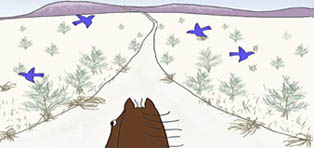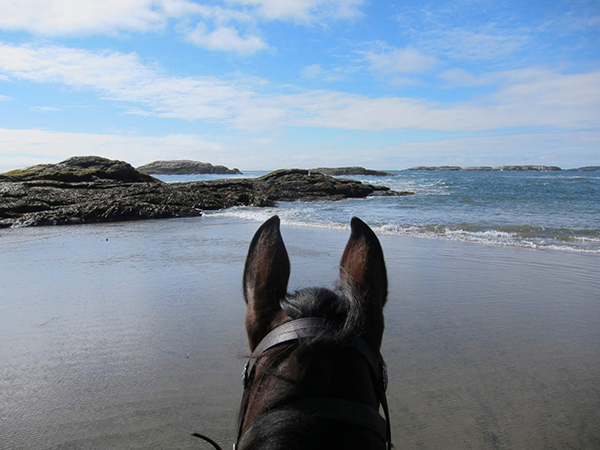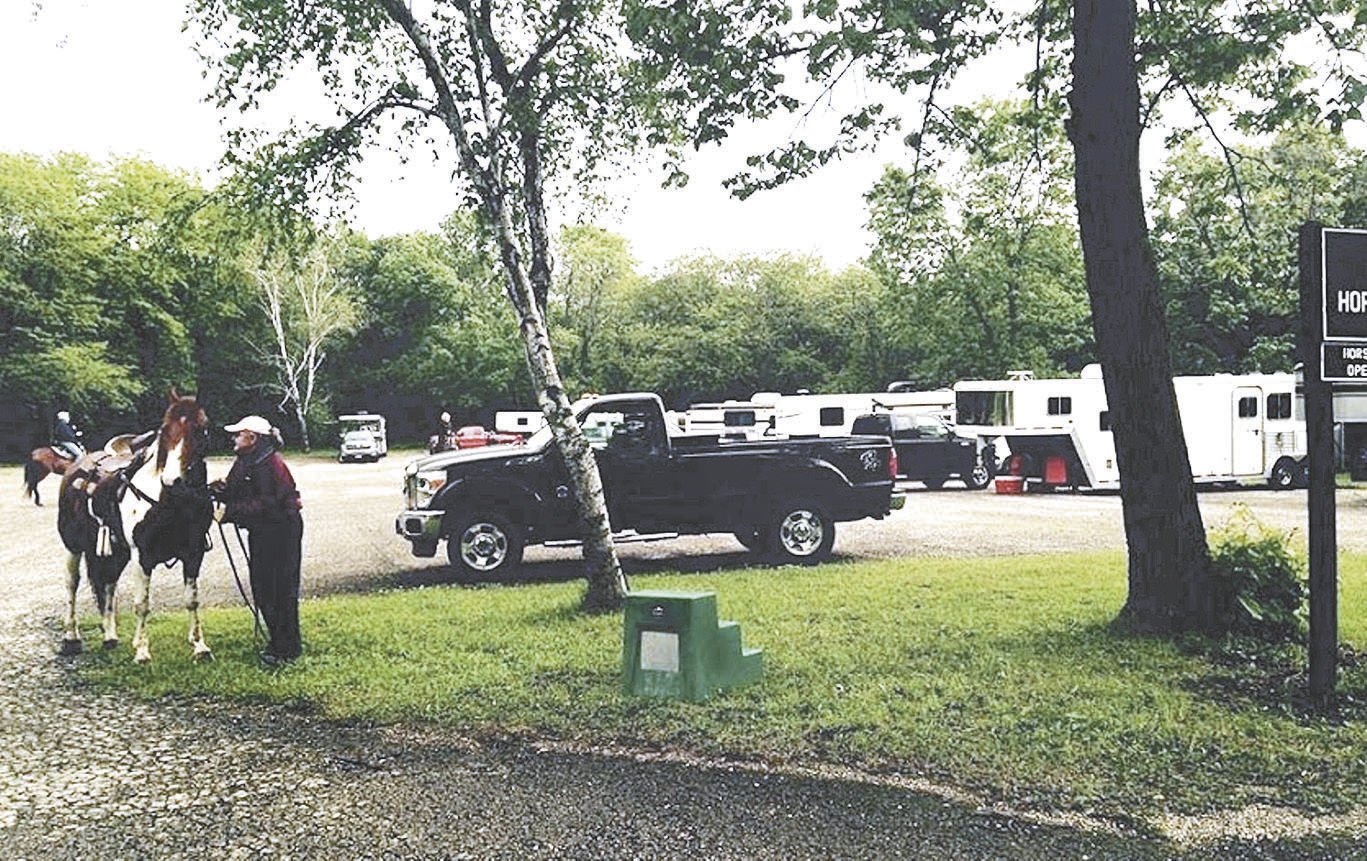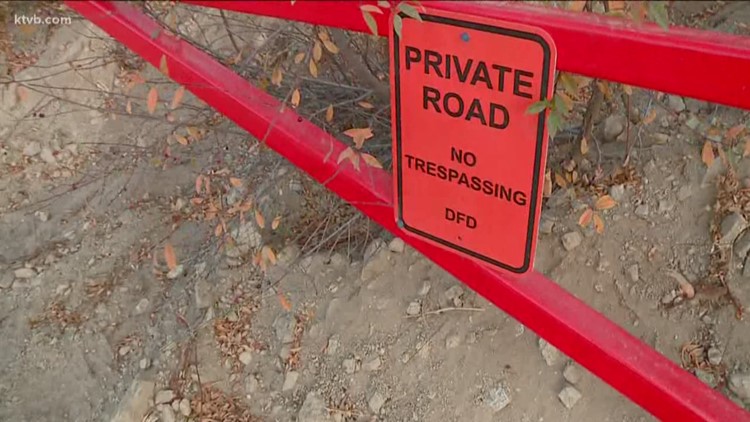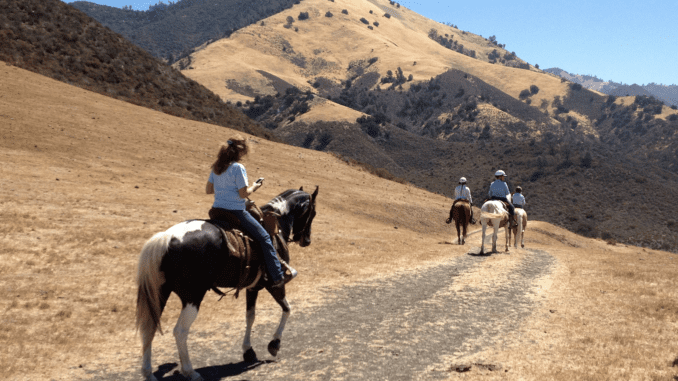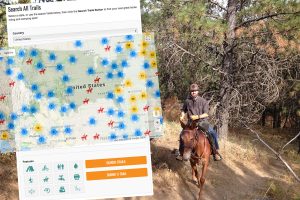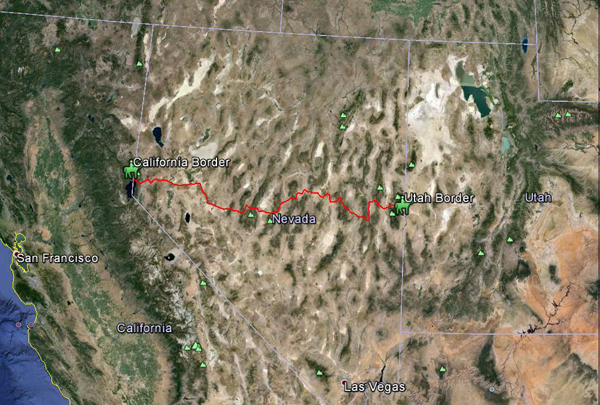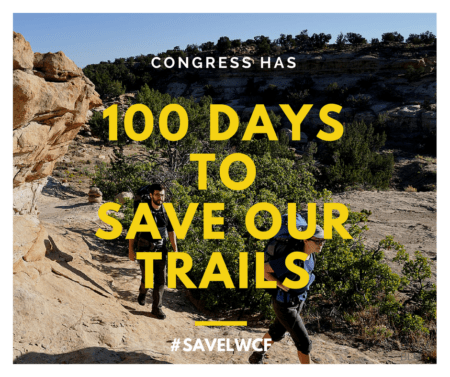Lexington, KY – August 20, 2018 – American Trails and Equine Land Conservation Resource (ELCR) will co-host a panel webinar on August 23, 2018 at 1:00 pm Eastern Time entitled “How They Did It: Planning and Creating Equestrian Trails Through Organization”.
Why attend this webinar? Part of American Trails’ Advancing Trails Webinar Series, this presentation focuses on the value and process of organizing throughout the equine community. Horsemen and women will see what organizations around the country are accomplishing as they protect places for equine activities of all kinds, and how collaboration is critical to getting things done. Planners will understand their role in helping achieve equestrian community needs through planning and conservation. Landscape architects will gain a better understanding of recreational equestrian trails in different regions of the country and how sustainable trail planning, design and maintenance can be done within the context of community health, wellbeing and welfare.
After an introduction by ELCR Education Director, Denise O’Meara, PLA, the following panelists will present aspects of the organization process in their communities, including sustainable trail planning, design and building.
Mary Farr works diligently to protect open land and trails in her home community of St. John’s, Florida, most recently creating trails through the community’s newly formed chapter of Back Country Horsemen, First Coast. Mary has lived in three of the fastest growing counties in the United States: Jefferson Parish (county), LA; Wake/Chatham County, NC and St Johns County, FL, and has “seen growth done poorly and done well”.
With her degree in Urban Planning and Economics and work in economic development and marketing research in the agricultural sector, Mary and husband Charles have placed a conservation easement on their 44-acre Long Leaf pine forest/horse farm, “so it will stay natural in perpetuity.” Mary will speak about the Coalitions that have formed, helping her to work through the trails and land protection scenario in her community on a variety of fronts.
Lyndall Erb is the San Mateo County, California director and president of Bay Area Barns and Trails. Lyndall will talk about BABT’s activities assisting landowners and land managers with preservation and maintenance of publicly accessible barns, stables, pastures, staging areas, horse camps, and trails throughout Alameda, Contra Costa, Marin, Napa, San Mateo, San Francisco, Santa Clara, Solano, and Sonoma Counties. BABT administers a grant program to assist local organizations with projects and activities that will help to protect equestrian activities, facilities and land.
Lyndall grew up in San Francisco and has been active in the horse community of the San Francisco Bay Area since moving back to California in 1994. She has served on the Board of several clubs and committees including Los Viajeros Riding Club; Equestrian Trail Riders Action Committee (ETRAC); and Coastside Horse Council. She served as Volunteer Coordinator for the Woodside-area Horse Owners Association (WHOA) and on the San Mateo County Confined Animal Technical Advisory Committee.
Mark Flint is a professional trail designer from Tucson Arizona, where he works as a part-time trails program coordinator for Pima County and has his own trail design business, Southwest Trail Solutions, which has designed trails in Vermont and Nevada as well as in many parts of Arizona. Mark is also a chief regional steward for the Arizona Trail Association. He will speak about the organizational process of the Association, the coalitions formed and work that has been accomplished, including specifics on trial design and maintenance in the somewhat unique conditions of the Arizona region and Arizona National Scenic Trail corridor.
Mark was heavily involved in the design and construction of the Arizona National Scenic Trail in Southern Arizona and did design and construction project management on segments in Central Arizona.
To register for the webinar, visit
https://www.americantrails.org/training/how-they-did-it-advocacy-planning-and-creating-equestrian-trails-through-organization. The webinar is free, with a $15 fee for CEU credits for landscape architects and planners.
About the Equine Land Conservation Resource (ELCR): ELCR builds awareness of the loss of lands available for horse-related activities and facilitates the protection and conservation of those lands working to ensure America’s equine heritage lives on and the emotional, physical and economic benefits of the horse-human relationship remains accessible. ELCR serves as an information resource and clearinghouse on conserving horse properties, land use planning, land stewardship/best management practices, trails, liability and equine economic impact. For more information about the ELCR visit
www.elcr.org or call (859) 455-8383
About American Trails: American Trails (AT) is a national, nonprofit organization working on behalf of all trail interests, including hiking, bicycling, mountain biking, horseback riding, water trails, snowshoeing, cross-country skiing, trail motorcycling, ATVs, snowmobiling and four-wheeling. AT supports local, regional, and long-distance trails and greenways, whether they be in backcountry, rural or urban areas by finding common ground and promoting cooperation among all trail interests. AT’s website,
www.americantrails.org , is a comprehensive online source for planning, building, designing, funding, managing, enhancing, and supporting trails, greenways, and blueways. Contact AT at their Redding California office: (530) 605-4395.
For additional information, contact:
Denise O’Meara, Director of Education
Equine Land Conservation Resource
Phone: 859-455-8383 /Email: domeara@elcr.org
www.ELCR.org
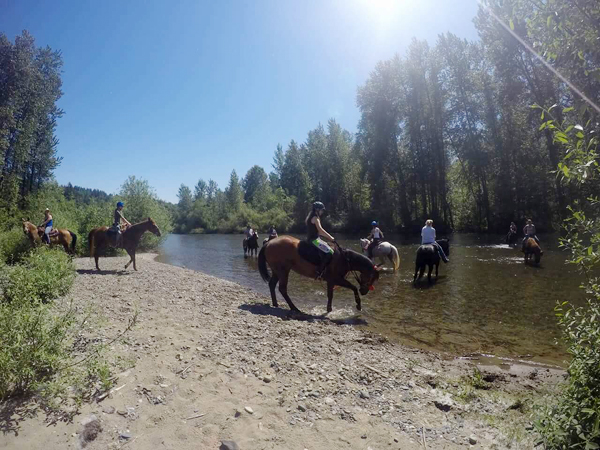 Equitrekking.com - Full Article
Equitrekking.com - Full Article